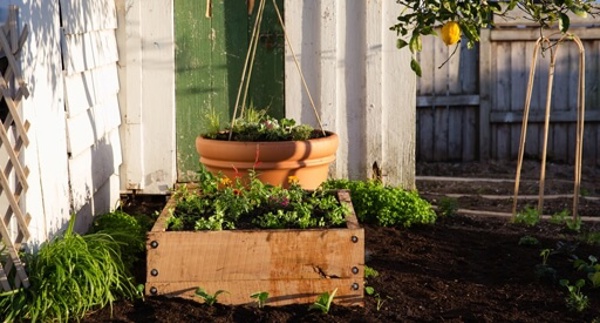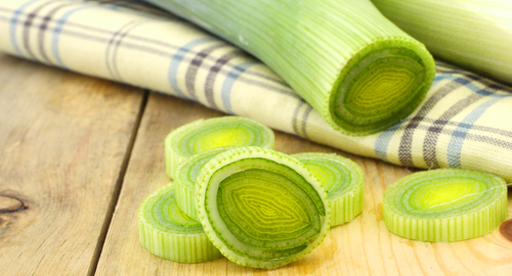
When planting edibles it is a good idea to think about what you like to eat - nothing beats the satisfaction of using fresh harvests from your own garden in your cooking!
Grow a variety of flavoursome ingredients to suit your favourite cooking cuisine and go from garden to table this spring.
The possibilities are endless when creating your own cuisine garden so we've picked our three all time favourite cuisines; French, Italian and Asian. Each cuisine has tasty, easy to grow herbs and veges. Plan your own cuisine garden based on your location, season and taste! Below is a selection of our favourite crops from each cuisine, plus how to plant a cuisine garden.
FRENCH
Flavoursome ingredients for French cooking.
Celeriac
A root vegetable widely used in European cuisine. Celeriac looks similar to celery but unlike celery, it grows in the soil for about six months of the year. Perfect raw in salads, grated into soups, stews and braises. Celeriac rémoulade is a popular starter to a meal in France. To make rémoulade, shredded celeriac is mixed with mayonnaise, mustard, lemon juice, garlic and chives.
Leek
The soft, sweet onion-like flavour of leeks is quite magical, whether they are served on their own or added to dishes. A relatively easy crop to grow, the base of a leek is a series of leaves that sit above and below the ground. A perfect crop for over the cooler months, leeks seem to taste sweeter the further south they are grown. Leeks are often used in soups, casseroles, quiches, tarts and pies. They go especially well with cream, butter, Gruyére, Parmesen, oysters, mustard, chicken, potatoes and ham.
Shallot
This small, sweet onion variety is a must-have for the gourmet vegetable gardener. Being a hardy, durable crop that tolerates cold temperatures, it is easy to grow and ideal for beginner gardeners. Shallots are traditionally planted on the shortest day and harvested on the longest day. For cooking they have a more subtle flavour than regular brown onion and are commonly used in French cooking – essential to sauces such as Béarnaise and red wine sauce for beef.
Silverbeet (chard)
Packed with both iron and flavour, silverbeet is a popular crop as it can be harvested perpetually – you can pick a few leaves at a time and it will regrow from the base. Silverbeet is quick-growing and hardy, thriving in both warm and cooler climates. Traditionally white stemmed varieties were grown but now yellow, orange, pink and red stemmed varieties are available – yellow being the sweetest. Silverbeet is enjoyed in cooking for both for its leaves and stems. Try shredded in raw salads.
Other popular French ingredients include asparagus, beetroot, fennel, celery, courgette, eggplant, garlic, green bean, mushroom, onion, parsnip and sage.
Tui Tip: Shallots and silverbeet are both good choices for beginner gardeners as they are hardy, easy to grow crops. Blend Tui Super Sheep Pellets into the soil before planting.

ITALIAN
Tasty ingredients for Italian inspired dishes.
Cavolo nero
Known as the Italian cabbage, cavolo nero is sought after by foodies the world over. It’s easy to grow, taking about 2-3 months to mature. Its upright habit takes up little space and you can harvest a few leaves at a time and more leaves re-grow - it produces a marathon of greens for up to six months! Delicious in soups, pasta and slow cooked dishes, cavalo nero is becoming a winter vegetable staple for the garden.
Rocket
A very quick-growing crop that is commonly used as a salad ingredient, or as a garnish. Rocket has a distinctive sharp, peppery flavour and is ready in a matter of weeks from planting. Ideal in pots and containers, it is also very easy to grow, making it ideal for beginner gardeners. Rocket leaves work well over the top of pizzas for a fresh peppery finish once out of the oven, or try tossing them with spaghetti, grilled prawns, lemon zest, chilli and sea salt for an Italian pasta!
Tomatoes
Tomatoes take pride of place in Kiwi gardens over the summer months and are a fresh ingredient in Italian dishes. The exceptional taste of Beefsteak, Campari and Roma makes these varieties a flavoursome addition to Italian style dishes. Tomatoes, basil, extra-virgin olive oil, salt and pepper are a favourite combination. Mozzarella can also be added to form the Italian Caprese salad.
Basil
This distinctive herb is an iconic ingredient of Italian cooking, and an essential element of classic pesto. It partners well with tomatoes, and a scattering of fresh leaves provides the finishing touch to pizza and pasta dishes, bruschetta and salads. Tearing, rather than cutting, the leaves will help prevent browning. Basil is relatively quick and easy to grow.
Other popular Italian ingredients include artichoke, garlic, romaine lettuce, parsley, radish, salad greens and zucchini.

ASIAN
Fresh ingredients for aromatic Asian dishes.
Bok choi
A very quick growing Asian green that is sweet, tasty and exceptionally easy to cultivate and cook. It is a reliable crop throughout much of the year – just make sure you plant lots as it shrinks in size when cooked. Bok choi is commonly found in South East Asian dishes, often gently simmered in soups or stir-fried with other vegetables. It goes particularly well with garlic, oyster sauce, soy sauce, sesame, chicken, duck, pork, prawns, ginger and chilli.
Coriander
Add a flavour punch to your Asian inspired dishes with freshly snipped coriander. Also called cilantro, coriander is a quick-growing, hardy herb and can be planted all year around. Its leaves have a delicate sweet flavour, adding freshness to your meal. Pinch off leaves as required and use in your dishes either cooked or fresh. Coriander is a staple in South East Asian cooking. The leaves are often used as a garnish, tossed in salads or
chopped into dressings. Coriander goes well with pork, beef, chicken, prawns, fish, garlic, lime and chilli.
Snow peas
Fresh homegrown peas can’t be beaten by store bought peas and taste delicious eaten straight off the plant. Bright green snow peas are easy and fast to grow. They are a flat pea commonly grown for use in salads and Asian stir-fries. Stir-frying snow peas will bring out their sweet flavour.
Vietnamese mint
If you want to try something different, plant Vietnamese mint - it makes a wonderful addition to Asian cooking. Commonly found in South East Asian cuisines, it has a strong flavour that combines citrus, coriander and mint. Vietnamese mint is popular in laksa, soups, stir-fries, curries and salads. It is a quick and easy to grow herb that will grow in either sun or shade – just ensure you give it plenty of space as it grows massive.
Other popular Asian ingredients include capsicum, chilli, cucumber, beans, eggplant, garlic chives, lemongrass, spinach and Thai basil.
Tui Tip: Use Tui Quash to keep slugs and snails off your leafy greens.
Directions for planting your cuisine garden in a pot or container/planter:
Cusine gardens look great in planter boxes or large pots, especially Italian in a stunning terracotta pot. Plant in a nice sunny spot handy to the kitchen.
Choose a speciality mix suited to what you are planting e.g Tui Herb Mix or Tui Vegetable Mix.
- Fill your container with Tui Herb Mix or Tui Vegetable Mix.
- Blend in Tui Super Sheep Pellets.
- Soak plants in Tui Organic Seaweed Plant Tonic before planting to help reduce transplant shock.
- Dig a hole, approximately twice the depth and width of the root ball of your plant.
- Gently loosen the root ball of your plant and position the plant in the hole. If planting multiple plants, space accordingly in the container.
- Press soil gently around the base of the plant.
- Water your plant well.
Shopping list:
- Tui Herb Mix or Tui Vegetable Mix depending on what you are planting
- Tui Super Sheep Pellets
- Tui Organic Seaweed Plant Tonic
- A selection of herbs and veges. You can also choose a selection of flowers for added colour.
Download a printable PDF guide here
Post a comment
Cuisine Gardening Guide Comments
Be the first to write a comment